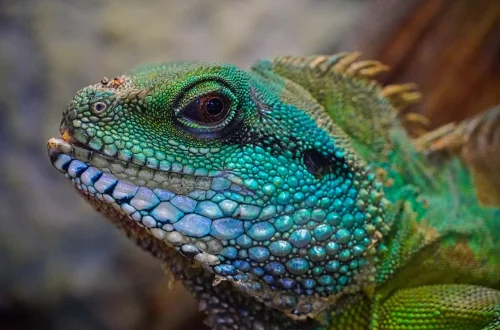
Understanding Dog Tongue Color Chart: What Your Dog’s Tongue Means
Understanding your dog’s health and well-being involves paying attention to various signs and symptoms, one of which is the color of their tongue. Many dog owners might observe that their furry friends have tongues that vary in shades, from the classic pink to more unusual colors like blue or purple. While it might be easy to overlook this characteristic, understanding tongue color can provide insights into your dog’s overall health.
The tongue is a vital organ that plays a significant role in a dog’s ability to eat, drink, and communicate. It can also reflect underlying health conditions. For instance, a dog with a healthy tongue typically exhibits a pink hue, which is a sign of good circulation and oxygenation. Changes in tongue color may indicate various health issues, ranging from harmless to severe. As pet owners, it’s essential to be observant and recognize if your dog’s tongue has altered in color, as this could warrant a visit to the veterinarian.
Moreover, understanding the reasons behind these changes not only helps in monitoring your dog’s health but also fosters a deeper bond between you and your pet. While a dog’s tongue color can be influenced by their diet, environment, and even breed characteristics, being informed can empower you to take appropriate action if needed. In this article, we will explore the spectrum of tongue colors and what they may signify regarding your dog’s health.
Common Tongue Colors and Their Meanings
The color of your dog’s tongue can vary widely, and each shade can provide valuable information regarding their health status. A healthy dog’s tongue is typically a shade of pink, indicating good blood circulation and a well-oxygenated body. This is generally regarded as a sign of overall wellness. However, it’s essential to recognize the various other colors that a dog’s tongue can exhibit and what they might indicate.
A blue or purple tongue can be a cause for concern. This discoloration may suggest a lack of oxygen in the bloodstream, a condition known as cyanosis. If you notice your dog’s tongue has developed a bluish tint, it is crucial to seek veterinary care immediately. This could indicate serious respiratory or cardiovascular issues.
On the other hand, a red tongue can signal inflammation or heatstroke. If your dog has been exposed to high temperatures or is exhibiting signs of overheating, such as excessive panting or drooling, a red tongue can be an alarming indicator that they require immediate cooling and possibly veterinary attention.
In contrast, a white or pale tongue may signal anemia or poor circulation. This could be due to various factors, including parasites, internal bleeding, or other underlying health issues. If you observe these changes, it’s advisable to consult your veterinarian for a thorough evaluation.
Furthermore, if your dog’s tongue has developed spots, patches, or any unusual markings, this can also be a sign of health problems. These could range from benign growths to signs of more serious conditions, such as infections or tumors. Regularly checking your dog’s tongue and noting any changes can be an essential part of your routine health monitoring.
Understanding these common tongue colors and their meanings can empower you as a pet owner to take proactive steps in your dog’s health management. Regular veterinary check-ups and being alert to changes in your dog’s tongue color can help catch potential health issues early, ensuring your furry friend remains happy and healthy.
The Influence of Diet on Tongue Color
Diet plays a crucial role in your dog’s overall health, and it can significantly influence the color of their tongue. Certain foods can lead to temporary changes in tongue color, often reflecting not just the dog’s dietary habits but also their nutritional needs.
For example, dogs that consume a diet rich in certain pigments, such as beets or carrots, may exhibit a more vibrant tongue color. These natural food colorings can sometimes lead to a temporary discoloration that is harmless. However, it’s important to differentiate these dietary effects from more serious health concerns. If the color change persists even after dietary adjustments, it may be time to consult a veterinarian.
Moreover, a diet lacking in essential nutrients can contribute to health issues that could manifest in tongue color changes. For instance, inadequate hydration can lead to a dry mouth and a darker tongue. Ensuring your dog has access to fresh water and a balanced diet can help maintain their tongue health.
It’s also worth noting that some commercial dog foods contain artificial colors and additives that may temporarily affect tongue color. While these ingredients are generally considered safe, it’s always best to opt for high-quality dog food with natural ingredients whenever possible. A healthy, balanced diet not only supports your dog’s overall well-being but can also help maintain a healthy tongue color.
In conclusion, while dietary choices can influence tongue color, they should not be the sole factor in determining your dog’s health. Regular veterinary check-ups and attentive monitoring of changes in your pet’s tongue can help ensure that any underlying issues are promptly addressed.
When to Seek Veterinary Care
Being attentive to your dog’s tongue color is an important aspect of responsible pet ownership. However, knowing when to seek veterinary care is just as crucial. If you observe any significant changes in your dog’s tongue color, it’s essential to evaluate the situation carefully.
In general, if you notice a persistent blue or purple tint to your dog’s tongue, it indicates a potential lack of oxygen, which can be life-threatening. Immediate veterinary intervention is necessary. Similarly, if your dog’s tongue turns bright red, especially in conjunction with symptoms like excessive panting or lethargy, it may indicate overheating. In such cases, cooling your dog down and seeking veterinary assistance is vital.
A pale or white tongue can also be a sign of serious health issues, such as anemia or internal bleeding. If your dog’s tongue appears pale and is accompanied by other symptoms—like weakness, vomiting, or lack of appetite—do not hesitate to contact your veterinarian.
Additionally, if you notice any unusual growths, sores, or persistent discoloration that does not resolve over time, it’s crucial to consult with a professional. These changes can be indicative of infections, tumors, or other health problems that require immediate attention.
Being proactive and observant can make a significant difference in your dog’s health outcomes. Regular health check-ups and being alert to changes in your dog’s tongue color can help you catch potential issues early, leading to better health management and a longer, happier life for your furry friend.
*Disclaimer: This article is for informational purposes only and should not be considered medical advice. Always consult your veterinarian or a qualified healthcare provider for health concerns regarding your pet.*




